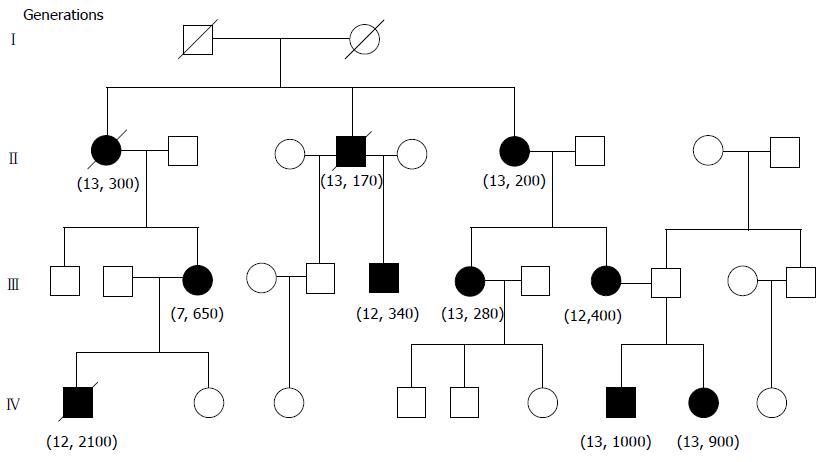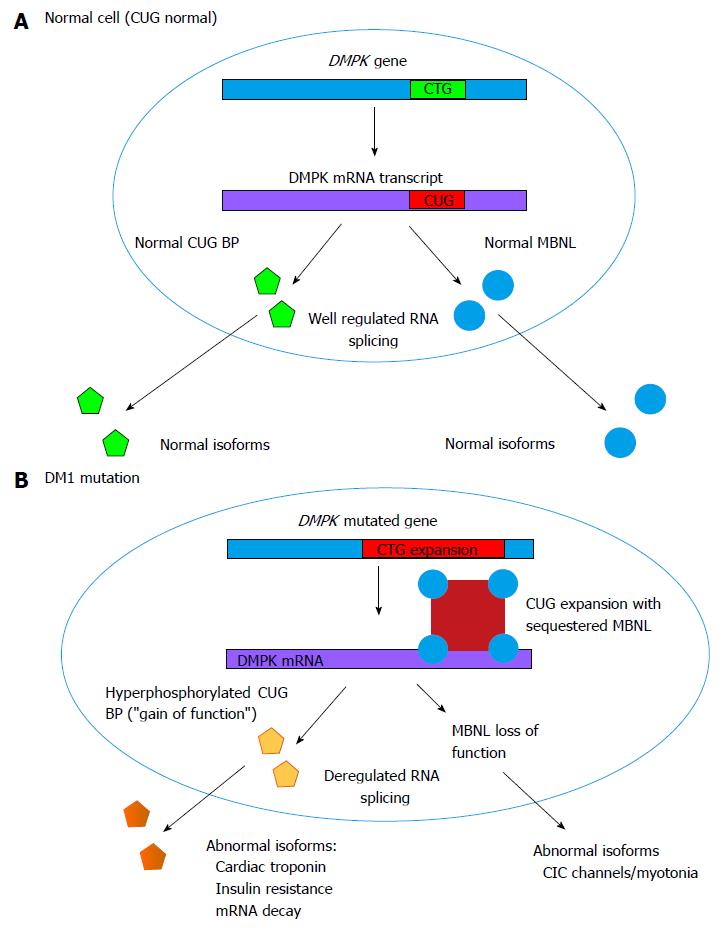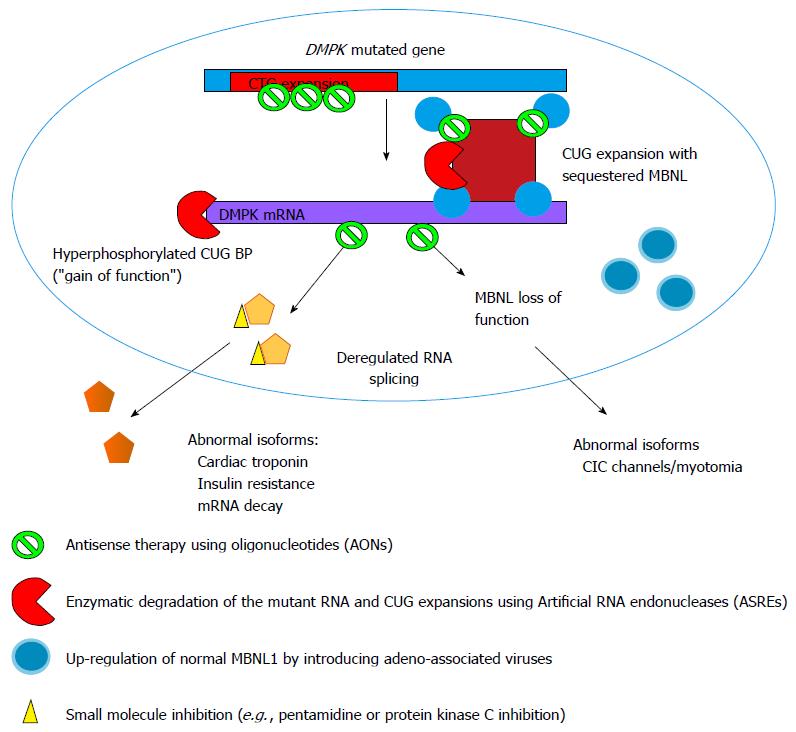Copyright
©The Author(s) 2015.
World J Clin Pediatr. Nov 8, 2015; 4(4): 66-80
Published online Nov 8, 2015. doi: 10.5409/wjcp.v4.i4.66
Published online Nov 8, 2015. doi: 10.5409/wjcp.v4.i4.66
Figure 1 Genogram of family with myotonic dystrophy type 1 illustrating autosomal dominant inheritance.
The numbers in brackets indicate the number of CTG triplet repeats in the 3’ untranslated portion of the DMPK gene of affected individuals. Square = male; Circle = female; Black symbol = DM1 affected individuals; Strikethrough symbol = deceased.
Figure 2 The genetic basis of myotonic dystrophy type 1.
In DM1 there is an unstable CTG expansion at the DM1 locus, DMPK. Repeat size correlates with phenotype of DM1. DM1: Myotonic dystrophy type 1; DMPK: Dystrophia myotonica protein kinase.
Figure 3 Pathogenic mechanisms in myotonic dystrophy type 1: (A) Normal RNA processing in cell with normal CTG repeats at the myotonic dystrophy type 1 locus; (B) Effects of expanded CTG repeat at the DM1 locus.
A: Normal actions of MBNL and CUG BP in regulating alternative splicing within a cell; B: Pathogenic mechanisms involving MBNL and CUG BP, resulting in deregulated alternative splicing. While DM1 mutation is an untranslated CTG expansion, it is expressed at the RNA level and the CUG binds with two RNA binding proteins (CUGBP and MBNL) to disrupt RNA processing and splicing of other genes. For example, altered splicing of chloride channel and insulin receptor transcripts leads to myotonia and insulin resistance, respectively. DM1: Myotonic dystrophy type 1; MBNL: Musclebind-like protein; CUG BP: CUG binding protein.
Figure 4 Novel therapies using RNA-based mechanisms to mediate RNA toxicity in a myotonic dystrophy type 1 cell.
Promising trials have shown various means and targets of RNA mediated therapy with the aim of reversing or modifying “spliceopathy” and normalising cellular splice protein levels and actions. MBNL: Musclebind-like protein.
- Citation: Ho G, Cardamone M, Farrar M. Congenital and childhood myotonic dystrophy: Current aspects of disease and future directions. World J Clin Pediatr 2015; 4(4): 66-80
- URL: https://www.wjgnet.com/2219-2808/full/v4/i4/66.htm
- DOI: https://dx.doi.org/10.5409/wjcp.v4.i4.66












